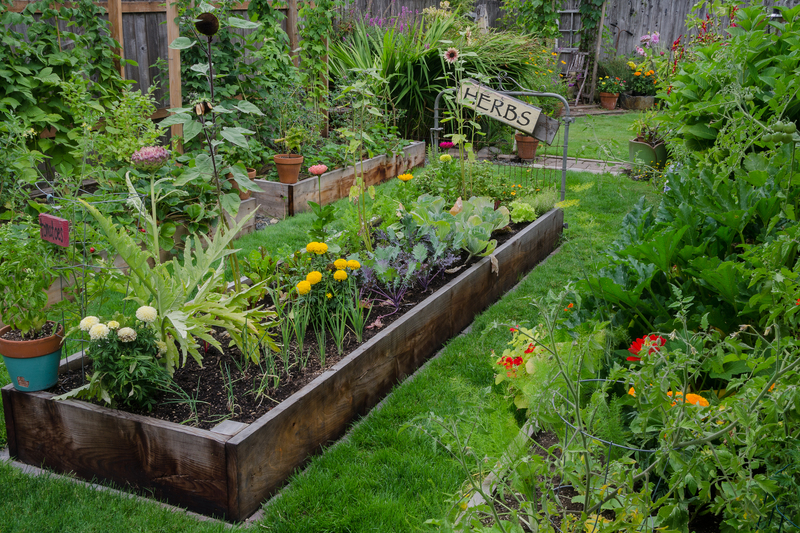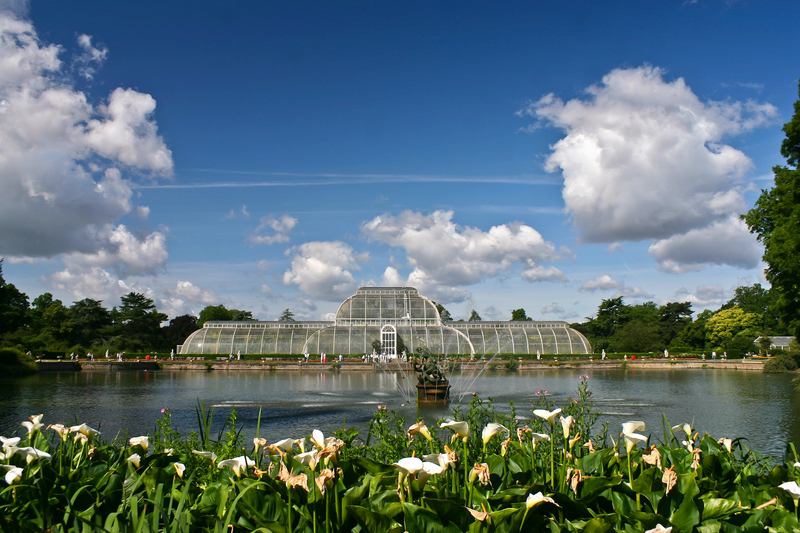Container Gardening: Your Step-by-Step Guide to Lush Urban Gardens
Posted on 14/08/2025
Container Gardening: Your Step-by-Step Guide to Lush Urban Gardens
Container gardening is taking urban spaces by storm, transforming tiny balconies, patios, and rooftops into lush green havens. For city dwellers and anyone with limited outdoor space, planting in pots offers an easy, flexible, and creative way to grow flowers, herbs, vegetables, and even small fruit trees. In this comprehensive guide, we'll walk you through every step needed to build, maintain, and enjoy your own thriving container garden--no matter how little space you have.
Why Choose Container Gardening for Urban Spaces?
Urban living often means sacrificing a traditional backyard, but that doesn't mean you have to give up on greenery. Container gardens are ideal for:
- Limited space: Bring nature to balconies, windowsills, and rooftops.
- Flexibility: Move your plants to chase the sun or shade as needed.
- Soil control: Bypass poor ground soil for optimal potting media.
- Design and creativity: Experiment with arrangements, colors, and styles.
- Accessibility: Elevate pots for easier gardening, especially for those with mobility issues.
Fun fact: Container planting can dramatically reduce pests and diseases compared to in-ground beds--perfect for urban environments!

Getting Started: The Basics of Successful Container Gardening
1. Selecting the Right Containers
The foundation of every successful container garden starts with choosing the right pots. Here's what to consider:
- Material: Options include clay, ceramic, metal, wood, and plastic. Each has its pros and cons--clay is porous and classic, while plastic is lightweight and retains moisture longer.
- Drainage: Containers must have drainage holes to prevent root rot. If your favorite pot doesn't, drill or poke extra holes in the bottom before planting.
- Size: Make sure your containers are appropriately sized for your plants. Bigger pots retain moisture longer and support larger root systems.
- Style: Mix colors, shapes, and textures for visual interest. Just make sure all your containers can withstand your local climate.
2. The Importance of Quality Potting Mix
Soil is the secret ingredient to vibrant urban container gardens. Don't scoop up garden soil; it's heavy and may harbor pests. Instead, use a high-quality, well-draining commercial potting mix. Additives like perlite, vermiculite, and coir help retain moisture without becoming soggy. For vegetables, look for mixes enriched with organic compost or slow-release fertilizer.
3. Choosing the Right Plants for Your Urban Container Garden
The beauty of urban container gardening is the sheer variety of plants you can grow. Before buying, consider:
- Light requirements: Is your site full sun, part shade, or mostly in the shade? Match your plants to the light they'll receive.
- Growth habits: Combine upright plants with trailing or vining varieties for depth and dimension.
- Water needs: Group plants with similar thirst levels together to make watering easier and more efficient.
- Purpose: Grow colorful annuals, fragrant herbs, fresh veggies, or even compact fruit shrubs.
Best choices for containers include:
- Edibles: Tomatoes, lettuce, radishes, basil, chili peppers, mint, strawberries
- Flowers: Petunias, marigolds, geraniums, pansies, begonias, nasturtiums
- Shrubs and Dwarfs: Lavender, dwarf citrus, boxwood, rosemary
- Vines: Sweet peas, nasturtium, ivy
Step-by-Step Guide to Creating Your Dream Container Garden
1. Plan Your Space and Design
Think vertically! Use shelves, plant stands, wall-mounted pockets, or hanging baskets to create lush, layered displays without hogging precious floor space. Sketch your area, measure your sun exposure hourly, and note how much weight your balcony or terrace can safely bear.
- Pro tip: Group containers together for a microclimate effect--plants protect each other from heat and wind and help retain humidity.
- Balance your colors and heights for an attractive, dynamic look. Place taller plants in the back and trailing ones toward edges.
2. Prepare Your Containers
- Clean pots thoroughly before planting to eliminate pests or residues.
- Layer the bottom with pottery shards or stones if desired (optional--it's not required for drainage, but can help keep soil from washing out).
- Fill with moist, fresh potting mix to about 2 inches from the rim.
3. Plant Like a Pro
- Gently loosen roots of nursery plants so they can spread out easily.
- Set each plant at the same depth it was growing in its original container.
- Firm the soil gently around roots, leaving about an inch of space from the top for easy watering.
- Water thoroughly until water runs from the drainage holes.
4. Position for Optimal Growth
Arrange your pots according to each plant's sunlight needs. Rotate containers every few weeks to ensure even light exposure and balanced growth, especially in spots where sun angles change seasonally.
Maintaining Your Container Garden: Tips for Urban Success
Water Wisely
Container plants dry out faster than garden beds. Check soil moisture daily (especially in summer), and water until the excess trickles from the pot. Some tips:
- Self-watering pots are ideal for busy gardeners.
- Mulch the surface with pebbles or bark to slow evaporation.
- Remember: Smaller pots, sunny spots, and windy conditions speed up drying.
Feed for Thriving Growth
Container-grown plants quickly use up nutrients. Apply a balanced liquid fertilizer every 1-2 weeks, or use slow-release granules as per instructions. If growing edibles, select organic or food-safe fertilizers.
Pruning, Deadheading, and Harvesting
- Remove faded flowers (deadheading) to keep annuals blooming longer.
- Snip herbs frequently to encourage bushy regrowth.
- Harvest veggies and fruits promptly for best flavor--and to spur new production.
- Prune overgrown stems and pinch back for compact, healthy plants.
Managing Pests and Diseases
Urban gardens are less vulnerable to common pests, but issues can still arise. Inspect your containers regularly for aphids, spider mites, or powdery mildew. Use organic solutions like insecticidal soap, neem oil, or simply remove pests by hand. Good airflow, regular cleaning, and avoiding overwatering are key prevention tactics.
Designing Stunning Urban Container Gardens
Color and Texture
Mix bold textures and contrasting leaf shapes for high visual impact. Combine trailing ivies with upright grasses or spiky petunias with round, bushy marigolds for eye-catching arrangements.
Height and Layering
Use stands, trellises, or overturned crates to vary heights. Hang baskets for cascading blooms, and tuck diminutive herbs or succulents along the bottom.
Theme Gardens
- Herb Haven: Basil, mint, thyme, parsley, and chives are compact, fragrant, and culinary delights.
- Edible Salad Bowl: Lettuce, radishes, cherry tomatoes, and nasturtiums thrive together in large, shallow containers.
- Pollinator Paradise: Choose nectar-rich blooms to attract butterflies and bees--even in the heart of the city.
Seasonal Rotation
One of the joys of container gardening is how easy it is to refresh your plant displays seasonally. Replace tired summer annuals with pansies and ornamental kale in fall, or tuck in bulbs and evergreens for winter color.
Common Challenges in Urban Container Gardening (& How to Fix Them)
- Wilting or Yellowing Leaves: Usually a sign of over- or under-watering. Test soil before watering, and make sure pots have adequate drainage.
- Rootbound Plants: If growth slows, roots may have filled the container. Repot into a larger vessel, trim roots gently, and refresh the soil.
- Pests: Look for curled, yellow, or chewed leaves. Remove visible bugs and try non-toxic solutions first.
- Legginess: Plants are stretching for sun. Relocate to a brighter spot, prune back, or choose varieties better suited for shade.
Tips for Sustainable and Eco-Friendly Urban Container Gardening
- Choose organic potting mixes and avoid peat-based soils where possible to protect bog habitats.
- Recycle old containers or get creative with upcycled pots--think colanders, buckets, or wooden crates.
- Harvest rainwater for irrigation where possible.
- Compost plant trimmings, and reuse spent potting mix for non-edible plant containers.

Frequently Asked Questions About Container Gardening
- Q: How often should I water my container garden?
- A: Depending on weather and container size, check daily. Most containers need water when the top inch of soil feels dry.
- Q: Can I grow vegetables in containers?
- A: Absolutely! Tomatoes, peppers, lettuce, carrots, radishes, and many herbs thrive in pots. Choose compact or 'patio' varieties where possible.
- Q: What's the best fertilizer for urban container gardens?
- A: A balanced liquid fertilizer for flowers and ornamentals; organic blends for edibles. Follow label rates and avoid overfeeding.
- Q: Can I leave my container garden out in winter?
- A: Hardy perennials and evergreens in large pots may survive mild winters. For colder climates, move containers indoors or group together and wrap in burlap or bubble wrap for protection.
Conclusion: Start Your Urban Container Gardening Adventure Today
With the right approach, container gardening unlocks a world of possibilities for anyone dreaming of lush, green spaces in the city. Whether you crave the taste of fresh tomatoes on your balcony or a riot of flowers by your window, the flexibility and beauty of urban container gardens are within your reach. Plan, plant, and enjoy a touch of nature--no yard required.
Ready to grow? Gather your pots, choose your plants, and cultivate your own urban oasis one container at a time. Happy gardening!

